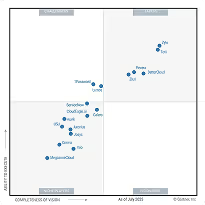HIPAA Compliance Checklist for 2025

Did you know that 60% of enterprise SaaS and AI apps operate outside IT’s visibility?
That’s not a small number; it’s a growing storm. As cloud adoption skyrockets, so do access risks, compliance gaps, and redundant licenses.
Without effective SaaS governance tools, IT teams are left firefighting, trying to protect data while juggling hundreds of unmonitored applications.
That’s exactly where SaaS governance automation steps in. It helps you bring structure, visibility, and control to your software ecosystem, without slowing down business agility.
In this blog, we’ll explore what SaaS governance is, why automation is now non-negotiable, and the 10 best SaaS governance tools that help IT teams automate the entire process, from access reviews to compliance enforcement.
TL;DR
- SaaS governance tools automate visibility, access, and compliance across all apps.
- SaaS governance automation reduces manual work and improves security.
- Leading tools include CloudEagle.ai, Okta, and Microsoft Entra ID.
- CloudEagle users save 10–30% on SaaS spend with AI-driven optimization.
- Automation is the future of efficient, secure SaaS management.
What Is a SaaS Governance Tool?
A SaaS governance tool helps organizations control, monitor, and secure their software-as-a-service applications.
Think of it as a digital control tower that ensures every user, license, and permission is compliant, cost-efficient, and risk-free.
These tools centralize SaaS management for IT teams, giving them the ability to track who has access to what, revoke privileges when needed, and automate workflows like provisioning or deprovisioning.
According to Gartner, 70% of organizations using over 50 SaaS applications struggle with visibility and access oversight.
In simpler terms, SaaS governance automation ensures your SaaS ecosystem doesn’t spiral out of control.
Challenges IT Teams Face Without SaaS Governance Automation
Let’s be honest, managing SaaS manually is like juggling knives blindfolded. IT teams are constantly under pressure to balance security, compliance, and productivity.
Without SaaS governance automation, chaos quickly takes over.
Here’s what that looks like in practice:
Manual Access and License Management
When you’re running 100+ SaaS apps, tracking access through spreadsheets is a nightmare.
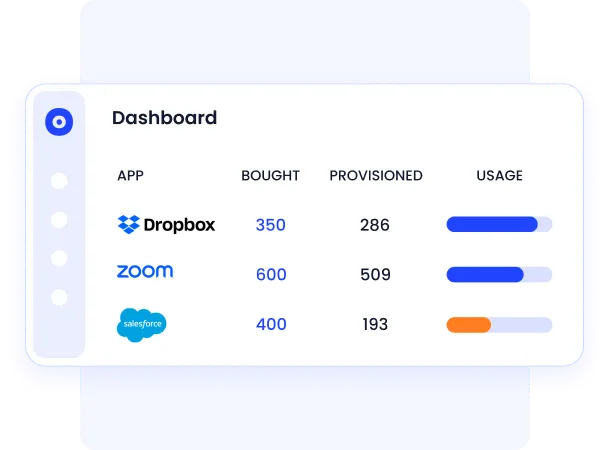
Without automation, IT admins are stuck in repetitive cycles, granting, updating, and revoking access manually.
What this leads to:
- Delayed onboarding and frustrated employees
- Over-provisioned access that increases risk
- Orphaned licenses that silently drain budgets
48% of ex-employees still have access to corporate apps after leaving the company — CloudEagle 2025 IGA Report.
This is where SaaS governance tools shine, automating provisioning, license allocation, and removal so that nothing slips through the cracks.
Shadow IT and Compliance Gaps
Shadow IT has exploded. Employees sign up for AI tools or free trials using corporate credentials, and IT often finds out months later.

Without automating SaaS governance, this creates hidden vulnerabilities and compliance risks.
The risks include:
- Unapproved data sharing on unsecured apps
- Non-compliance with frameworks like SOC 2 or GDPR
- Lack of centralized control or audit visibility
Here’s the thing: without visibility, there’s no control. And without control, compliance is just a checkbox, not a strategy.
Lack of Visibility into SaaS Usage and Ownership
When you don’t know who owns which apps, how they’re used, or what they cost, governance becomes guesswork.
Common outcomes include:
- Duplicate apps performing the same function
- Unused licenses billed for months
- Security risks from unmanaged integrations
With SaaS management for IT teams, all this data flows into one dashboard. Visibility leads to optimization, and that’s what automation delivers.
How SaaS Governance Automation Works
Let’s break it down: SaaS governance automation works like a self-driving engine for your IT processes.
Instead of manually running audits or access reviews, automation continuously monitors, flags, and fixes governance issues before they escalate.
Here’s how it typically works
Automating Access Reviews and Role Assignments
Instead of manually reviewing every user, automated workflows trigger access certifications and recertifications at defined intervals.
How it helps:
- Reduces human error by aligning access with roles
- Ensures timely removal of inactive users
- Simplifies compliance audits with real-time logs
As stated in the CloudEagle 2025 IGA report, organizations using automation reduce privileged access misuse by 45%.
Continuous Monitoring and Policy Enforcement
Automation doesn’t sleep; it constantly monitors your SaaS stack for suspicious activity, policy violations, and unused accounts.
With automated SaaS governance, you can:
- Enforce least-privilege access policies
- Auto-revoke stale or dormant access
- Get alerts for unusual activity or compliance violations
Think of it as your 24/7 governance guardrail, quietly keeping your SaaS environment safe and compliant.
Integration with IT Systems (Okta, Microsoft Entra ID, etc.)
Modern SaaS governance tools plug directly into your IT ecosystem, HRIS, SSO, and identity providers like Okta, Microsoft Entra ID, and Workday.
Why this matters:
- HR triggers onboarding/offboarding automatically
- Access rights sync across all systems instantly
- Audit trails remain consistent across platforms
This level of IT governance automation ensures zero downtime, faster response, and compliance confidence during audits.
10 Best SaaS Governance Tools That Automate IT Processes
1. CloudEagle.ai
CloudEagle.ai is a market leader in SaaS discovery, spend optimization, and identity governance automation.
Purpose-built for large and mid-market organisations, it delivers a unified view of all cloud applications, user access, and financial data, helping businesses regain complete control of their SaaS ecosystem.
Unlike point solutions that focus only on visibility or security, CloudEagle.ai connects the entire lifecycle, discovery, license management, spend control, and access governance into one intelligent platform.
Features:
- Continuous SaaS and IT discovery via direct integrations and expense data.
- Advanced shadow IT discovery using network and identity insights.
- AI-powered detection of duplicate applications and redundant spend.
- Automated license reclamation workflows for unused SaaS licenses.
- Integration with SSO, finance, and HR systems for end-to-end visibility.
- Compliance-ready reports aligned with SOC 2 and ISO 27001 standards.
Benefits:
- Cost savings: identifies wasted licenses and optimises procurement strategies (10-30% savings typical).
- Improved security & compliance: automated access reviews, enhanced security workflows, audit-ready logs.
- Operational efficiency: reduces manual work across IT, procurement, and finance.
- Faster onboarding & offboarding: zero-touch provisioning ensures tool access on Day 1, automatic revocation when leaving.
- Scalable for enterprise: handles thousands of users and apps seamlessly.
Pricing:
CloudEagle.ai offers flexible, usage-based pricing tailored to each organisation’s SaaS stack size and integration needs. On average, businesses can expect pricing in the range of $5,000 to $50,000+ annually, depending on company size and SaaS complexity.
Why Choose CloudEagle.ai?
Because if you’re serious about getting full-spectrum SaaS governance, not just visibility or access alone, CloudEagle.ai delivers.
It brings automation, intelligence, and savings together so IT, procurement, security, and finance teams can work as one.
2. Microsoft Entra ID (formerly Azure AD)
Microsoft Entra ID extends Microsoft’s robust identity platform into SaaS access and governance. It’s ideal for organisations embedded in the Microsoft ecosystem looking for scale and integration.

Features:
- Centralised identity management across Microsoft and third-party apps.
- Sign-in logs and authentication event tracking.
- Built-in conditional access policies for compliance enforcement.
- Integration with Azure Security Center for threat monitoring.
Limitations:
- Discovery scope limited primarily to Microsoft-connected tools.
- Lacks automated duplicate-app detection or cost-optimization features.
- No native functionality for reclaiming unused SaaS licenses.
Pricing:
3. Okta Identity Governance
Okta brings strong identity capabilities and a broad app integration ecosystem, making it a go-to for organisations looking at SaaS access and lifecycle automation.
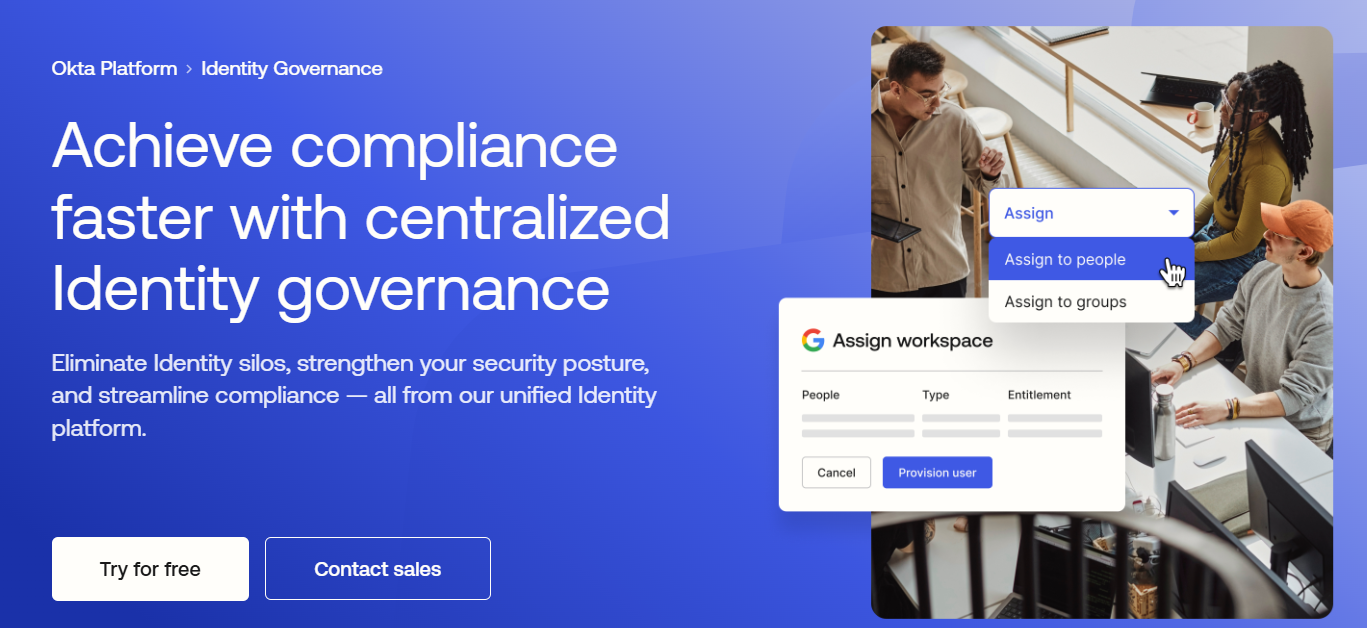
Features:
- Automated user lifecycle management (provisioning, deprovisioning).
- Access governance: role-based approvals, certifications, and audit trails.
- Wide SSO and application integration across thousands of SaaS apps.
Limitations:
- Complex pricing structure and modular add-ons make cost planning tricky.
- Annual contract minimum required.
- While strong in access governance, less focus on spend optimization or full SaaS-lifecycle governance.
Pricing:
- Starting around $9-11/user/month for Identity Governance tiers.
- Note: Modular pricing can cause variability depending on the features selected.
4. Google Workspace Admin Console
The Admin Console from Google offers governance controls, mostly for Google apps and connected third-party services, making it a practical choice for organisations already using Google Workspace heavily.

Features:
- Admin dashboard with app access and user management.
- Basic compliance and data loss prevention (DLP) tools for Google apps.
- Integration with Google’s suite simplifies identity and access management.
Limitations:
- Not a dedicated SaaS governance tool, it lacks advanced automation, license optimisation, and shadow-IT discovery.
- Limited integration outside the Google ecosystem for full SaaS portfolio governance.
- Less granular control for role-based access and automated workflows compared to specialist tools.
Pricing:
- Included with Google Workspace packages (Business/Enterprise), consult Google for specific plans and pricing.
5. Cisco Cloudlock
Cisco Cloudlock focuses on cloud-native security and compliance for SaaS and collaboration apps, making it a choice for organisations prioritising governance and data protection.

Features:
- Real-time monitoring of SaaS app usage and collaboration tools.
- Policy enforcement for data sharing, insider threat detection, and DLP.
- Integration with major cloud platforms and identity systems.
Limitations:
- More security-governance oriented than spend/usage optimisation, with less focus on license harvesting.
- Requires a strong existing identity infrastructure for full value.
- Pricing and feature tiers may vary significantly per deployment.
Pricing:
- Contact Cisco for tailored enterprise pricing; publicly listed pricing is limited; expect an enterprise-level subscription.
6. ManageEngine Identity Manager Plus
ManageEngine Identity Manager Plus offers identity lifecycle automation and governance, suited for IT teams wanting detailed control over SaaS access and roles.
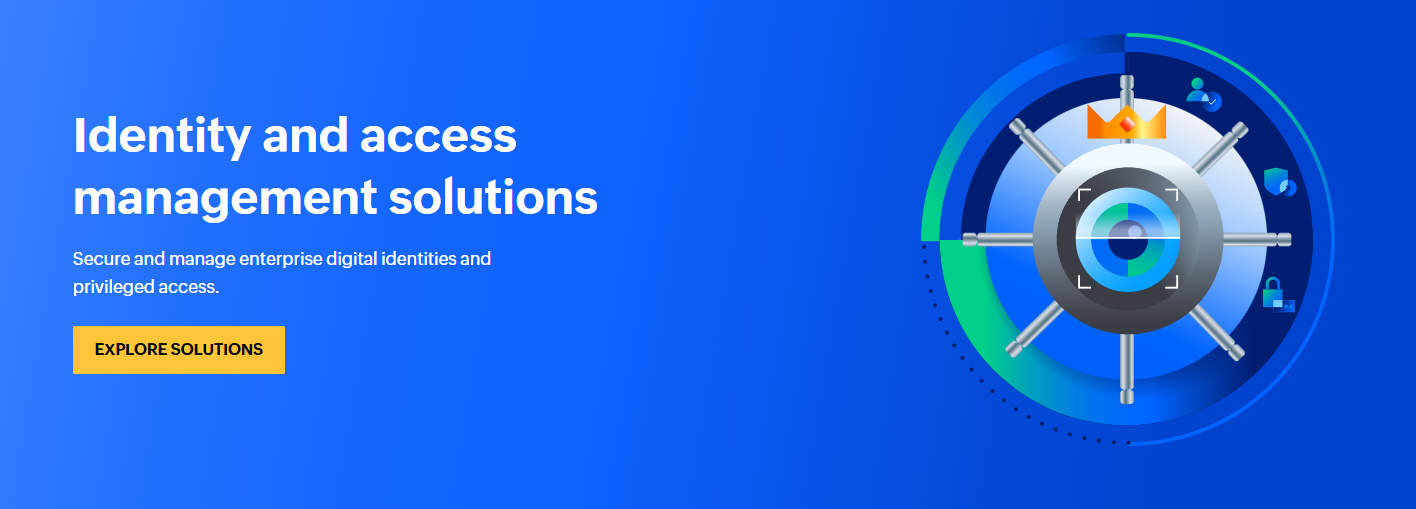
Features:
- Automated joiner/mover/leaver workflows for SaaS apps.
- Role-based access control (RBAC) across directories and SaaS apps.
- Audit logging and compliance reports for access governance.
Limitations:
- While strong in access governance, less focus on spend optimisation and full SaaS lifecycle (discovery, licence harvesting).
- UI and usability may lag compared to premium niche tools.
- Some advanced features may require additional modules or add-ons (thus higher cost).
Pricing:
- Contact ManageEngine for current 2025 pricing; typically based on the number of users and connected applications.
7. Snow Software
Snow Software provides broad visibility into both SaaS usage and software licensing, helping organisations improve control over spend and compliance.

Features:
- Discovery of sanctioned, unsanctioned, and shadow SaaS apps.
- Usage analytics and license optimization for SaaS and on-prem apps.
- Contract and renewal tracking to avoid surprises.
Limitations:
- Primarily focused on visibility and spend optimisation rather than full access governance automation.
- Implementation and data-gathering may require significant setup effort.
- Cost can escalate for large deployments.
Pricing:
- The average cost is around $150,000 per annum for enterprise deployments.
8. Lumos
Lumos offers a modern platform for SaaS access governance, third-party app connection oversight, and workflow automation, ideal for fast-moving organisations.

Features:
- Access request workflows and approval automation for SaaS apps.
- Third-party app connection monitoring and governance.
- Visibility into permissions, usage, and lifecycle of connected SaaS.
Limitations:
- Smaller footprint compared to legacy players; may lack breadth of integrations.
- Fewer public pricing disclosures are making budgeting less transparent.
- May require supplementary tools for advanced spend optimisation.
Pricing:
- Contact Lumos for custom pricing; enterprise usage-based model.
9. OneLogin
OneLogin focuses on identity access management and governance for enterprises, including SaaS access, lifecycle, and audit controls.
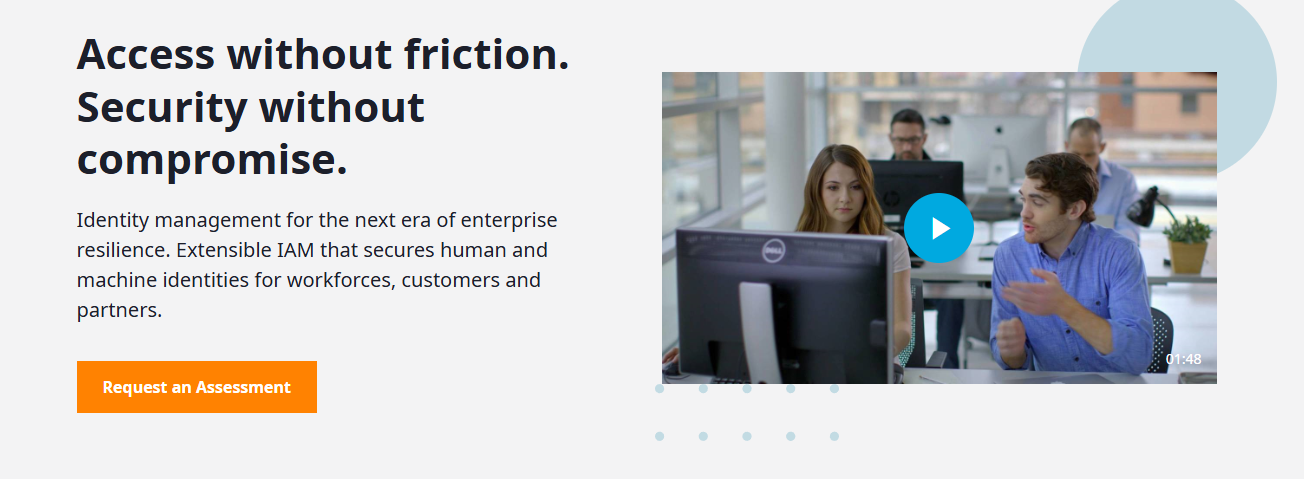
Features:
- Single Sign-On (SSO) across SaaS applications and identity providers.
- Access governance: role-based policies, user lifecycle automation.
- Audit logs and compliance tracking for SaaS access.
Limitations:
- Spend optimisation and licence harvesting features are not as advanced as some specialised SaaS governance tools.
- Integration breadth may be narrower than largest vendors in some geographies.
- Pricing tiers and modules can add complexity.
Pricing:
- Public pricing limited; enterprise license model based on the number of users and connected apps. Contact OneLogin for a quote.
10. IBM Security Verify
IBM Security Verify offers identity, access governance, and lifecycle automation at scale, especially for large enterprises with complex hybrid environments.
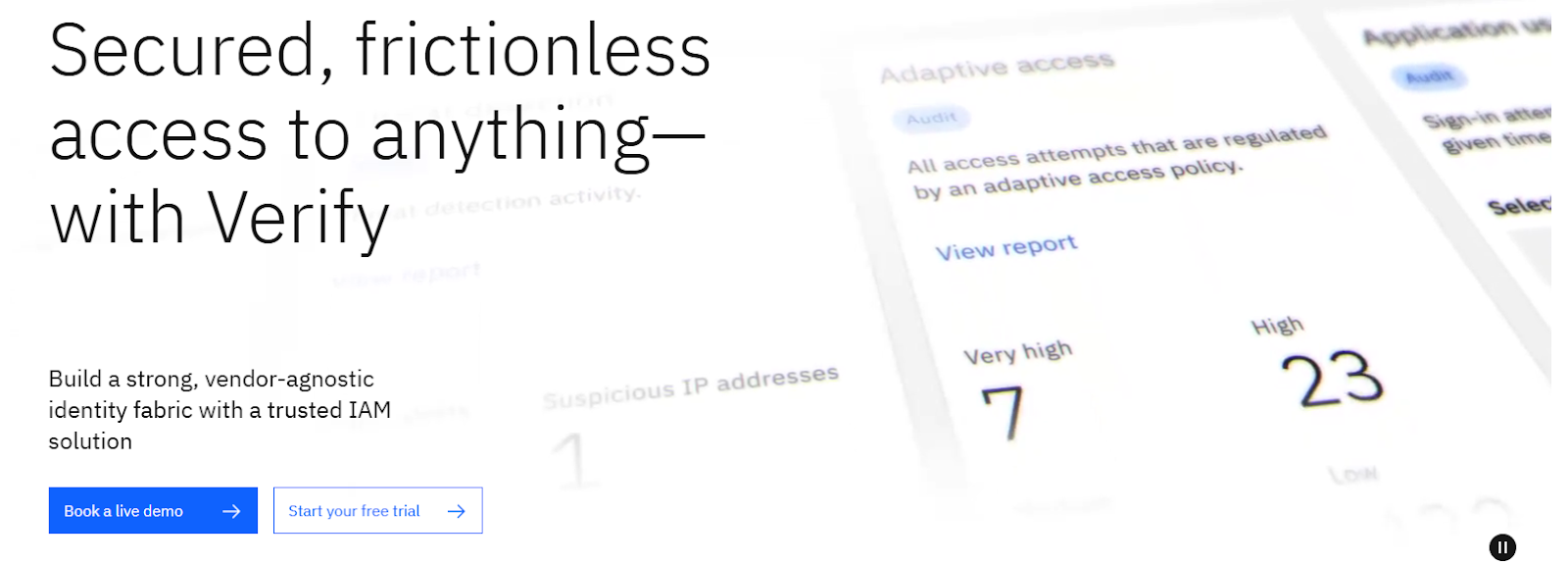
Features:
- Comprehensive identity governance and lifecycle management.
- Role-based access controls, access certifications, and policy enforcement.
- Hybrid cloud and on-premises integration, suited for large regulated organisations.
Limitations:
- Implementation complexity can be high; it may require dedicated resources.
- Cost tends to be higher due to enterprise scale and customisation.
- Less focus on SaaS-specific spend optimisation and discovery compared to niche SaaS-governance tools.
Pricing:
- Custom enterprise pricing typically requires contact with IBM sales for a tailored quote.
Key Features in a SaaS Governance Tool
Now that you know how governance automation works, let’s look at what makes the best SaaS governance tools stand out.
Spoiler: it’s all about combining visibility, automation, and AI-driven insights.
Role-Based Access Control (RBAC)
RBAC defines what users can and cannot do based on their role.
It eliminates the guesswork and ensures every employee has “just enough” access.
Benefits:
- Reduces the risk of over-privileged users
- Makes audits faster and cleaner
- Simplifies governance for large teams
By combining RBAC with SaaS access management, IT can enforce security boundaries effortlessly.
Automated Joiner, Mover, and Leaver Workflows (JML)
Onboarding and offboarding are two of the biggest pain points for IT. Manual processes often lead to delays and lingering access. That’s where JML works.
JML automation fixes that instantly:
- Auto-provisions access when an employee joins
- Adjusts permissions when they switch departments
- Revokes all access when they leave
80% of onboarding bottlenecks stem from manual provisioning — CloudEagle 2025 IGA Report.
Real-Time SaaS Usage Insights and Compliance Alerts
Knowledge is power, and real-time SaaS insights empower IT teams to act fast.
Here’s what this feature delivers:
- Live dashboards showing app usage and costs
- Alerts for non-compliant tools or risky activity
- AI-powered suggestions for license right-sizing
According to BetterCloud, 27% of IT budgets are wasted on underutilized SaaS licenses.
Shadow IT Detection and License Optimization
AI-driven governance platforms don’t just monitor, they discover. Shadow IT detection identifies unauthorized apps automatically and flags them for review.
With this capability, IT teams can:
- Discover unapproved SaaS usage in real time
- Optimize redundant or overlapping apps
- Ensure every tool meets compliance requirements
In short, it brings order to the chaos and makes automated SaaS governance a practical reality, not a buzzword.
Why CloudEagle.ai Is the Best Platform for SaaS Governance Automation
Designed for IT, security, procurement, and finance teams, it brings everything- discovery, access governance, and spend optimization- under one AI-powered roof.
Here’s why enterprises trust CloudEagle.ai to automate and simplify SaaS governance.
Centralized SaaS Management and Visibility
CloudEagle provides a single source of truth for all SaaS applications, vendors, and licenses

With over 500+ integrations and AI-driven discovery, IT and procurement teams can uncover every tool in use, even those flying under the radar.
Highlights:
- 100% visibility into your SaaS portfolio and spending.
- Automatic detection of shadow IT using network and identity insights.
- Unified dashboard that consolidates financial, access, and usage data.
Automated Access Governance
Security and compliance start with controlling access, and CloudEagle automates it end-to-end.
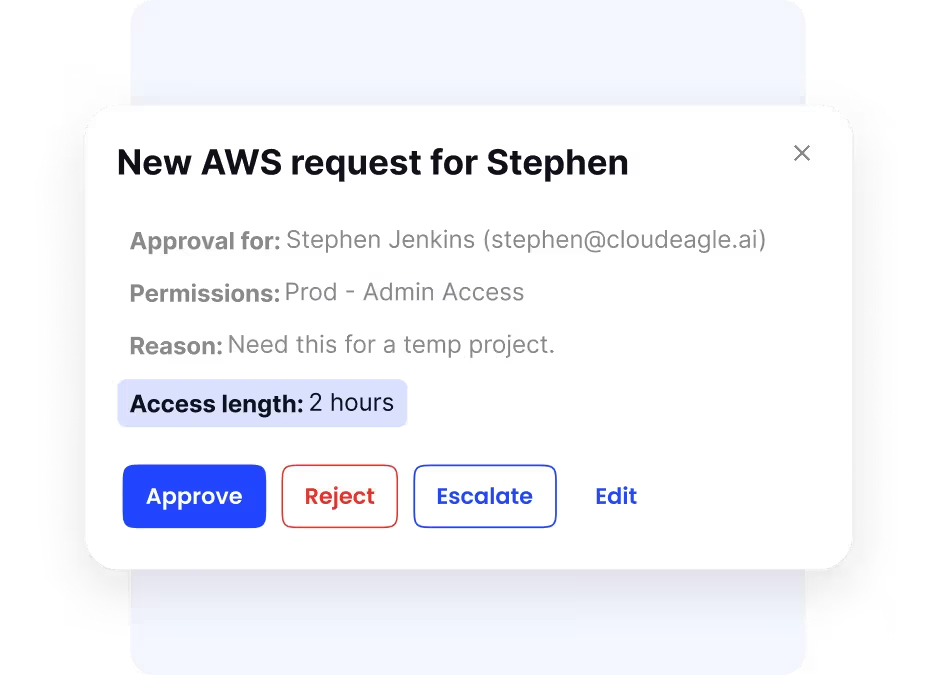
It automates provisioning, deprovisioning, and access reviews across every app, delivering strong access governance and ensuring the right users have the right access at the right time.
Why it matters:
- Eliminates overprivileged accounts and insider risks.
- Ensures compliance through audit-ready access logs.
- Role-based access controls (RBAC) align permissions with job functions.
SaaS Spend Optimization
Here’s where CloudEagle’s AI muscle really shines.

The platform identifies unused, duplicate, and underutilized licenses, giving IT teams real-time visibility into usage and immediate spend optimization opportunities.
Core advantages:
- AI-powered license harvesting and contract right-sizing.
- Detection of overlapping tools performing the same function.
- Procurement intelligence that helps teams negotiate smarter renewals.
Most customers report saving 10–30% of their total SaaS spend within the first year of adoption, all without cutting productivity tools employees rely on.
Smart Renewal Management
Managing renewals manually is tedious and risky.
Miss one renewal date, and you could be stuck paying for another year of an unused tool.

CloudEagle automates renewal tracking, reminders, and negotiations by linking contract data with real-time usage insights.
Key benefits:
- Auto-reminders for upcoming renewals with 360° app insights.
- AI suggestions for better vendor terms and cost forecasting.
- Visibility into contract history, usage, and owner accountability.
It’s like having a proactive SaaS renewal assistant, one that never forgets a date.
AI-Powered Security and Compliance
CloudEagle goes beyond traditional IAM by bringing AI-driven continuous monitoring to every SaaS app, whether managed by IT or not.
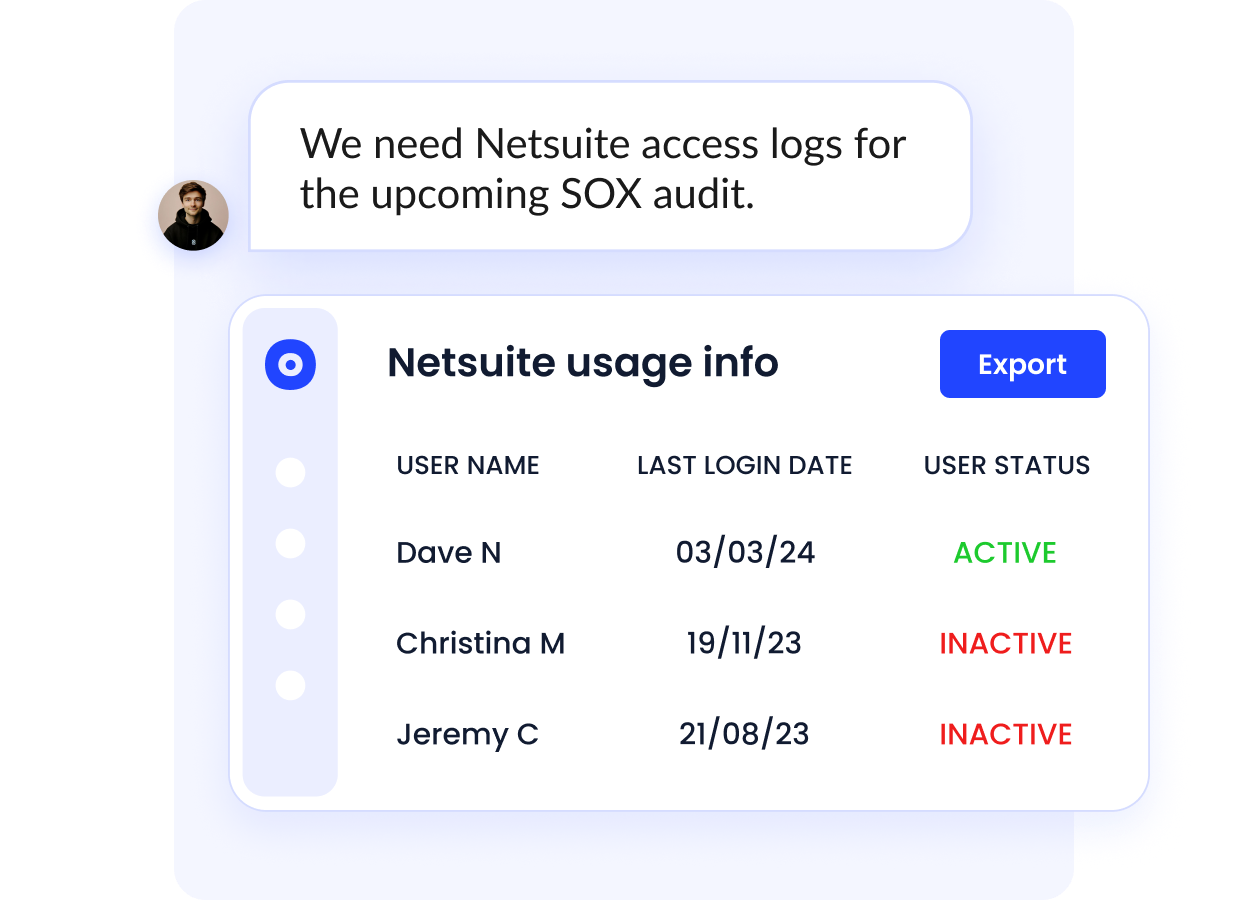
Top features include:
- Risk-based access reviews and adaptive policies.
- Just-in-time access provisioning for contractors and temp workers.
- Compliance alignment with SOC 2, ISO 27001, and GDPR standards.
CloudEagle’s IGA data reveals that enterprises automating access governance reduce privilege violations by 75% within three months.
Effortless Onboarding and Offboarding
Zero-touch provisioning ensures new employees are up and running on day one, no IT tickets, no delays.

When someone leaves, CloudEagle automatically revokes their access across all connected SaaS apps, including shadow tools.
This automation delivers:
- Seamless onboarding that boosts digital employee experience (DEX).
- Real-time offboarding for enhanced security and compliance.
- Reduced IT workload by automating repetitive access tasks.
Scalable to Your Needs
Whether you’re managing 100 apps or 1,000, CloudEagle scales effortlessly.
Its flexible architecture, pre-built connectors, and customizable workflows ensure quick implementation, with no steep learning curve required.
What you get:
- Fast deployment and easy integrations with Okta, Workday, and Microsoft Entra ID.
- Scalable performance for mid-market to large enterprises.
- Continuous updates and support for growing SaaS ecosystems.
In A Nutshell
SaaS ecosystems are expanding rapidly, and manual governance can’t keep up. Automation is now essential for IT teams to maintain visibility, control, and compliance.
By automating access, renewals, and spend optimization, organizations can reduce risks, cut costs, and streamline governance effortlessly.
CloudEagle.ai leads the way with AI-driven automation, full-stack visibility, and measurable savings, making it the go-to platform for modern SaaS governance.
Book a free demo with CloudEagle.ai and take control of your SaaS governance today.
Frequently Asked Questions
1. What is SaaS governance?
SaaS governance is the process of managing, securing, and optimizing SaaS applications across an organization. It ensures proper access, compliance, and cost control while maintaining full visibility into all active SaaS tools.
2. What is the SaaS governance policy?
A SaaS governance policy defines the rules and procedures for acquiring, using, and managing SaaS apps. It helps IT teams maintain compliance, prevent shadow IT, and ensure secure, cost-effective SaaS operations.
3. What is the SaaS governance model?
The SaaS governance model outlines how organizations structure SaaS management — combining access controls, compliance workflows, and spend tracking to ensure data security and efficient app usage.
4. What is SaaS automation?
SaaS automation uses technology to streamline manual tasks like provisioning, license tracking, and renewals. It improves efficiency, reduces costs, and helps IT teams maintain consistent governance and compliance.
5. What is automated governance?
Automated governance leverages AI and automation to manage access, compliance, and SaaS operations in real time. It minimizes human error, enhances security, and ensures ongoing policy enforcement across all apps.

%201.svg)







.avif)




.avif)
.avif)




.png)
